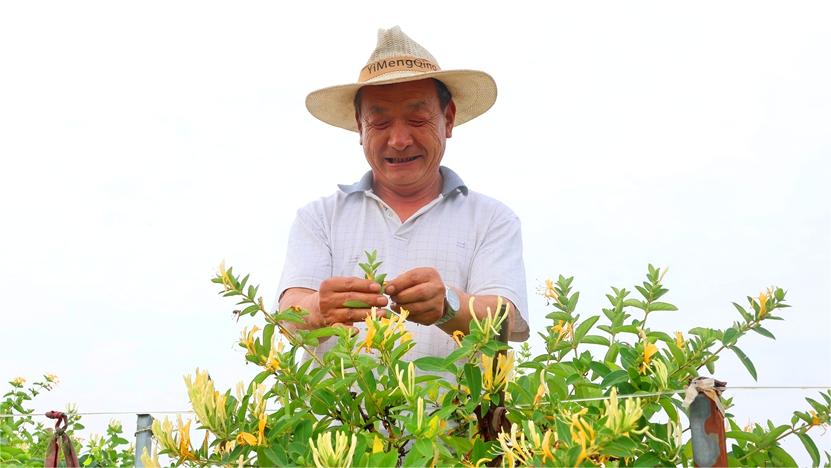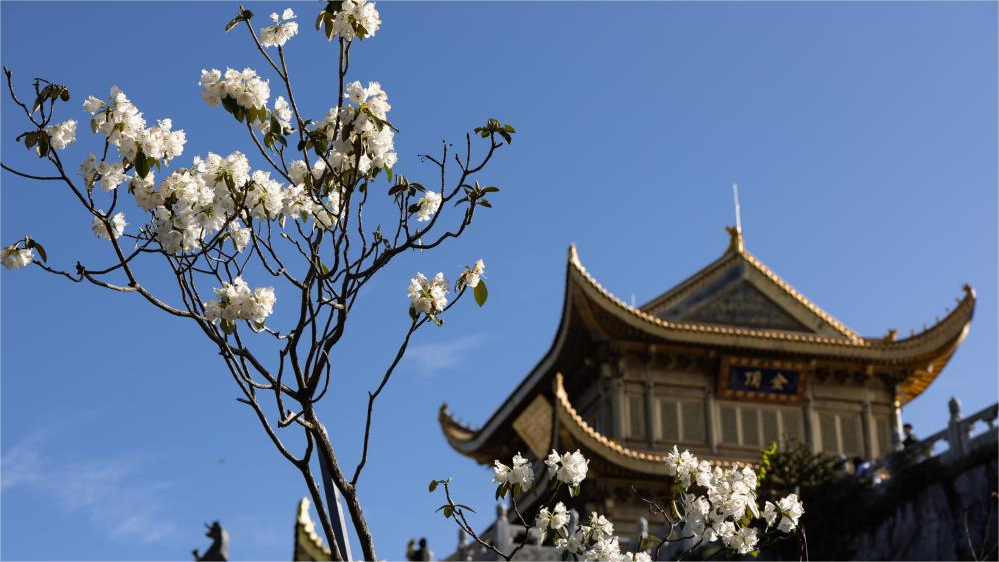China's flower industry flourishing amid growing demand
BEIJING, May 29 (Xinhua) -- For many Chinese people, buying fresh-cut flowers is increasingly a part of daily life, rather than a luxury reserved for special occasions like Valentine's Day.
This is particularly true for Lin Xiaoyun, a Beijing resident who purchases fresh flowers almost weekly through live-streaming sessions hosted by vendors from the Dounan Flower Market, Asia's largest fresh-cut flower trading market.
"Dounan's merchants offer great deals. For just 10 yuan (about 1.4 U.S. dollars), I can enjoy a week's worth of beauty," she said. "Work is exhausting, and taking care of my daughter is also quite tiring. Buying flowers is a way to make myself feel better."
Lin's story is part of a broader trend in China, whereby more people are incorporating fresh flowers into their daily routines to brighten their homes and boost their spirits.
Lang Yu, who runs a physical store at Dounan Flower Market in the city of Kunming, Yunnan Province, has witnessed this shift first-hand. "People now place great importance on ceremonies and celebrations. Fresh flowers have become a common way of expressing love," he said.
Dounan witnesses 40 million flowers of 1,600 varieties traded every day, making it a vibrant barometer of China's fresh-cut flower industry.
With about 1.5 million hectares dedicated to flower cultivation and more than 5 million people involved in the industry, China has become the world's largest flower producer, and an important flower trader and consumer.
The booming demand is being met by a growing number of online florists, allowing urban consumers to order flowers with just a few taps on their smartphones. According to internet statistics company Statista, China's flower e-commerce is on the rise due to the development of logistics services, with its market size expected to reach 164.4 billion yuan by 2025.
Bi Qianqian recognized the potential of selling flowers via live-streaming four years ago and now caters to online consumers. "My most successful broadcast session sold 200,000 flowers in just one hour," said Bi, a live-streaming host at Dounan Flower Market.
Yunnan produced 18.97 billion fresh-cut flowers in 2023, generating an agricultural output value of 47.2 billion yuan, according to the provincial department of agriculture and rural affairs.
While the picturesque Yunnan-Guizhou Plateau in southwest China is famous for its flower production, a transformation is also taking place in Lingyuan, northeast China. Extensive flower greenhouses have been set up in the region, ensuring a year-round supply of fresh flowers.
With an annual industry output value exceeding 1 billion yuan, growing flowers has become the primary choice for residents to achieve prosperity. "I can earn 100,000 yuan this year," said 45-year-old farmer Zhang Yulu, who cultivates lilies in Lingyuan, Liaoning Province.
A guideline jointly issued by China's National Forestry and Grassland Administration and the Ministry of Agriculture and Rural Affairs proposed that by 2025, the annual sales of the country's flower industry will reach 300 billion yuan, and more than 700 billion yuan in 2035.
Experts attribute much of this growth to the natural shift brought about by China's economic development. As families have more disposable income, they are more willing to spend on items that might have been considered wasteful in the past.
Statistics from the Retail Trade Branch of the China Flower Association show that women are the main flower consumers in China, accounting for 61.4 percent of the total. More than 60 percent of these consumers have a monthly income between 5,001 and 15,000 yuan.
"For many Chinese people, purchasing flowers has become part of their daily life," said Zhang Yan, a research fellow with the Liaoning Academy of Social Sciences. "In addition to economic growth, this trend reflects a growing desire for a more romantic and greener lifestyle."
Photos
Related Stories
Copyright © 2024 People's Daily Online. All Rights Reserved.









